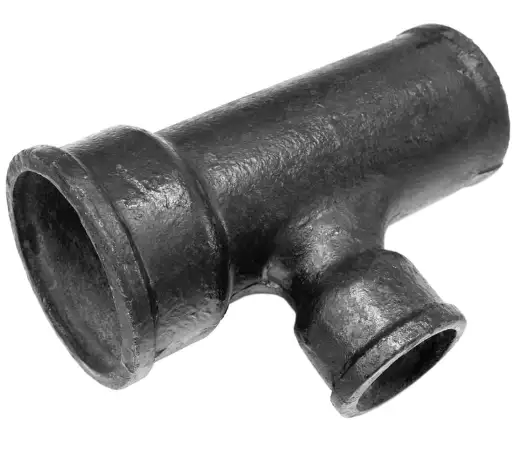When I first started working with black iron pipes, their sizing system confused me—why does a ‘1-inch pipe’ measure larger than its name suggests? Through years of hands-on projects, I’ve learned that black iron pipes follow the Nominal Pipe Size (NPS) standard, where the number refers to the approximate inside diameter of the pipe, not its actual dimensions.
1. Introduction: What Makes Black Iron Pipe Special
Black iron pipe—aka uncoated steel pipe—is widely used for gas lines, structural projects, and DIY crafts. It’s rugged. It threads easily. And, it’s magnetic—making quick identification a breeze. I usually stick to well-known Nominal Pipe Size (NPS) conventions and standard schedules (such as Sch. 40) when specifying and cutting.
2. Understanding Nominal Pipe Size (NPS)
Pipe sizing can feel counter‑intuitive. When we say a pipe is “3/4 inch,” that’s actually its nominal size, not the actual diameter. NPS refers to the standardized outside diameter (OD) of the pipe, while the internal diameter (ID) depends on wall thickness or schedule.
Here’s a snapshot:
| NPS (nominal) | Actual OD (in) | Schedule 40 ID (approx) |
|---|---|---|
| 1/2″ | 0.840″ | ~0.622″ |
| 3/4″ | 1.050″ | ~0.824″ |
| 1″ | 1.315″ | ~1.049″ |
Understanding this is the first step. If you measure outside diameter with a caliper and cross‑check a standard table, you can confirm nominal size and schedule.

3. External vs. Internal Dimensions
The outside diameter remains constant across schedules. But wall thickness varies—with higher schedules (e.g. 80) being thicker. Standard Foolproof Schedule 40 is your go‑to for gas and DIY. For example, a 3/4″ pipe has 14 tpi on tapered NPT threads .
4. Measuring for Threaded Fittings
Here’s where it gets technical—and vital:
-
Every fitting (tees, couplings, flanges) has two key dimensions:
-
Socket depth (“make‑up length”): How far the pipe enters.
-
Laying length: How much the fitting contributes to overall install length.
-
To calculate cut length between two fittings:
-
Measure face-to-face inside distance.
-
Add twice the socket depth (for both ends).
-
Alternatively, use centre-to-centre minus sum of laying lengths.
I always verify actual parts—manufacturers can slightly deviate.
5. Accounting for Thread Engagement & Make‑up
A reliable rule of thumb for black iron is 0.5–0.55″ of pipe threads inside each fitting
Example:
-
You want a finished run of 10″ between elbows.
-
Threads: 0.55″ × 2 = 1.1″ total.
-
So cut pipe to 8.9″.
For tighter seals, pipe can go deeper—but it may crack fittings or misalign.
6. Schedule, Wall Thickness & Material Properties
Black iron pipe comes in different schedules, which define wall thickness. Most DIY uses Schedule 40, but commercial or high-pressure systems might call for Schedule 80. Understand the material properties, such as yield strength and hand‑tight status, before cutting.
7. Comparison: Black Iron vs Other Pipe Types
Here’s how black iron stacks up:
| Feature | Black Iron (Steel) | Galvanized Steel | Copper | PVC |
|---|---|---|---|---|
| Corrosion Resistance | Low (black coating rusts) | Better (galvanized layers) | Excellent | Excellent |
| Thread Method | NPT tapered threads | NPT threads | Sweated, compression, crimp | Solvent weld, threads |
| Flexibility | Rigid, difficult to bend | Rigid | Moderately flexible (soft) | Rigid but available flexible |
| Cost | Moderate | Higher (coating cost) | Moderate to high | Low to moderate |
| Typical Uses | Gas, structural, bars, frames | Water, older systems | Water supply, HVAC | Drain, water, electrical conduit |
This helps identify when and why to use black iron.
8. Case Study: DIY Bar‑Top Frame
I recently helped a homeowner build a bar‑top shelf using 3/4″ black iron pipe:
-
Objective: Two vertical legs, each ~26″ tall, with flanges at top/bottom and a tee in the middle.
-
Measurements:
-
Flange effective length: ~0″.
-
Tee face-to-face: 2.25″; socket depth ~0.5″ per side ⇒ laying length ≈1.25″.
-
Vertical pipe length = 26″ – 1.25″ = 24.75″.
-
-
Thread allowance: add 0.5″ × 2 = 1″ ⇒ cut to 25.75″.
-
Final assembly: Pipe threaded into tees tightly left ~26″ height. Allowed ~⅛″ slack for snug adjustment.
This real-world build illustrates how nominal sizing, fitting allowances, and thread engagement converge.
9. Best Practices for Accurate Measurements
-
Always dry‑assemble fittings and pipe on a bench. Measure actual face-to-face before cutting.
-
Label each cut with its purpose. This prevents mix-up during assembly.
-
Cut slightly long, then test-fit: You can unscrew/trim to perfect length.
-
Wear pipe‑cutting and threading gloves. Black iron is rough.
-
Use thread sealant carefully. For structural projects, avoid over-tightening to maintain alignment.
10. Conclusion
Measuring black iron pipe is a skill that blends technical know‑how with practical craftsmanship. By understanding nominal sizes, schedules, fitting geometry, and thread allowance, you can achieve precise results every time. With technique and proper technique tools, projects—whether DIY shelves or professional installs—turn out accurate and lasting.
11. FAQs (Common Questions)
Q1: How deep should a black iron pipe thread into a fitting?
A: Roughly half an inch (0.5–0.55″) per end on 3/4″ pipe with standard fittings. Larger pipe may need deeper engagement, but always check manufacturer specs.
Q2: What is nominal pipe size (NPS)?
A: It’s a naming standard indicating pipe OD. For example, 3/4″ NPS actually has 1.050″ OD. Internal diameter depends on wall thickness schedule.
Q3: Why account for socket depth and lay‑in when cutting pipe?
A: Because threaded fittings add internal length. Without adjustments, your run will short or exceed target length .
Q4: Do different fittings (tees, elbows, flanges) affect length calculations?
A: Absolutely. Each fitting has unique socket depth and laying length. Always measure actual parts rather than rely on generic data.
Q5: How do I measure pipe diameter for purchase or replacement?
A: Use calipers to measure OD, then reference an NPS table to determine the correct nominal size. This confirms compatibility and schedule.

